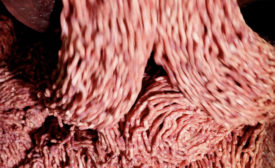Home » processors
Articles Tagged with ''processors''
AAMP’s annual convention and trade show will take place July 13–15 at the Charleston Area Convention Center.
Read More
National Chicken Council releases its most comprehensive guidelines to date for well-being of broiler chickens
NCC also plans to release an updated version of its Broiler-Breeder Welfare Guidelines by the end of 2023.
Read More
Independent Thoughts
Salvus’ new facility and handheld chemical and biological interferometric detector
Salvus detection technology gives results quickly.
Read More
Video | Coronavirus Coverage
Avoiding, preparing for wage and hour litigation out of COVID-19 measures
May 13, 2020
2020 Food Safety Report | Business Strategies
Navigating complexity in a global supply chain
Read MoreStep Outside ‘Labor Replacement’ Box
To design a truly successful system, processors must expand their thinking beyond viewing robotics and vision systems simply as labor-replacement tools.
Read More
Stay ahead of the curve. Unlock a dose of cutting-edge insights.
Receive our premium content directly to your inbox.
SIGN-UP TODAYCopyright ©2024. All Rights Reserved BNP Media.
Design, CMS, Hosting & Web Development :: ePublishing











